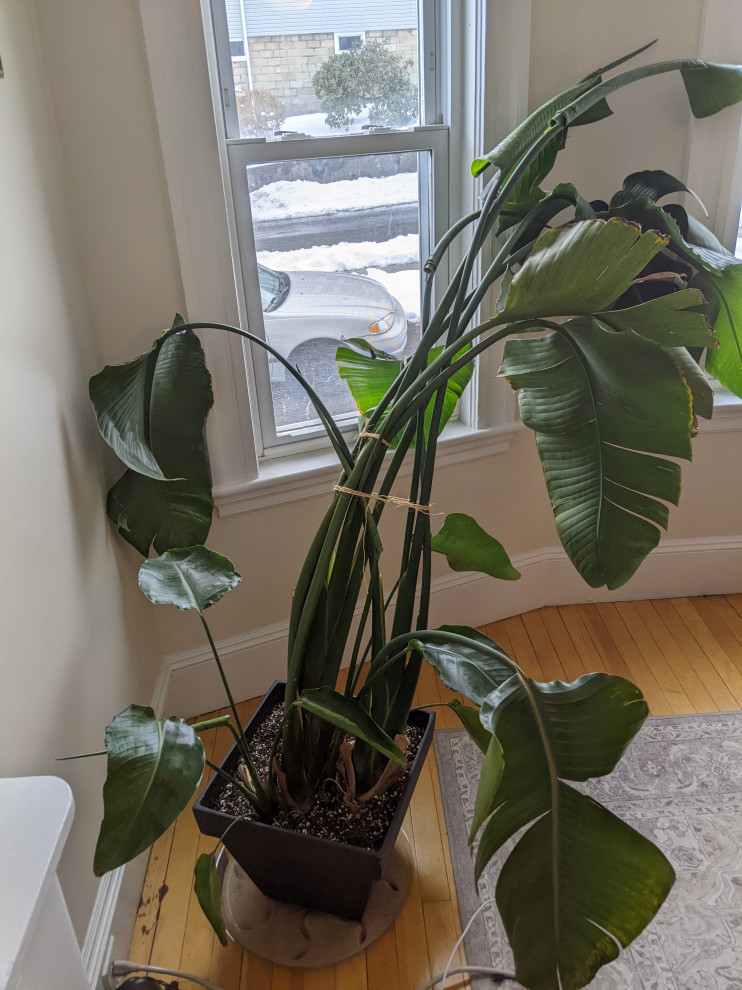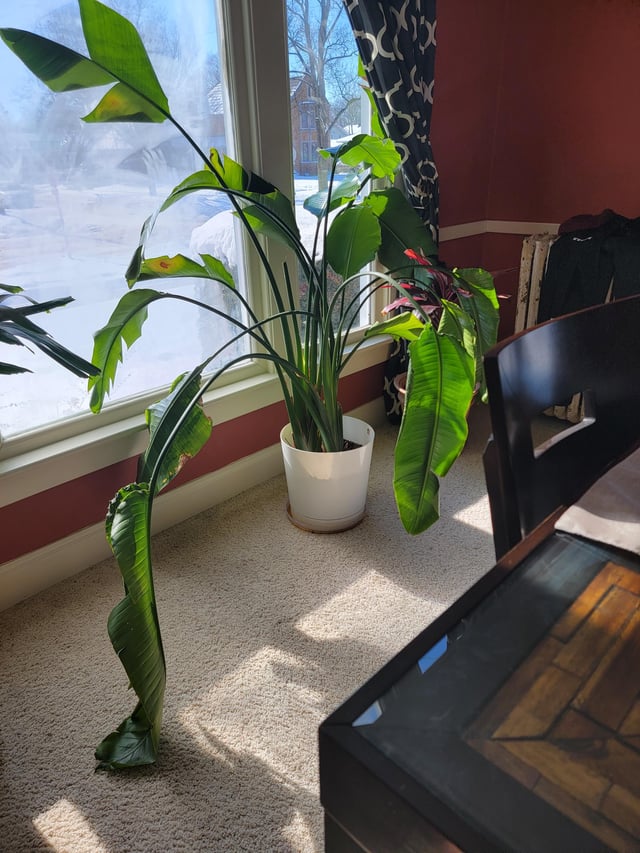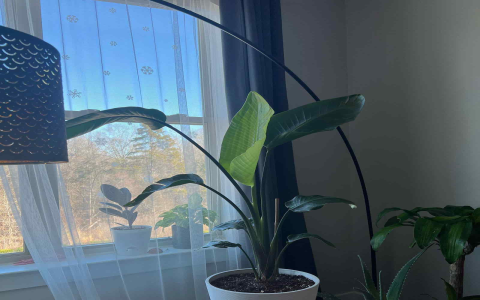So, I’ve been growing this bird of paradise plant for a while now. It was doing great, all lush and green. But recently, I noticed the leaves started to look a bit sad, you know? They were drooping, and some were turning yellow. I was like, “What’s going on with my plant baby?”
I started to check the soil, and it felt a bit too wet. I mean, I like to keep my plants hydrated, but this was more than usual. Then it hit me – I might have been giving it too much water. I remembered reading somewhere that these plants like moist soil but not soaking wet. Oops!

I did some more digging online (pun intended!) and found out that overwatering is a pretty common issue with bird of paradise plants. It can lead to something called root rot, which basically means the roots start to decay because they’re sitting in too much water. Not good.
Once I realized what I had done, I knew I had to act fast. The leaves were still mostly green, though, so I figured there was still hope. My mission became clear – to save my overwatered bird of paradise plant and stop the root rot!
Inspecting the Roots
First things first, I had to check the roots. I gently took the plant out of its pot and carefully examined the root system. Some of the roots were indeed a bit mushy and brown, which is a classic sign of root rot. But thankfully, not all of them were affected, I felt my mission still had hope.
Trimming the Damaged Roots
Next, I grabbed a pair of clean scissors and carefully trimmed away the mushy, brown roots. I made sure to cut above the damaged parts, leaving only the healthy, firm roots intact. I tried not to get too carried away, though. I didn’t want to shock the plant by removing too much of its root system.
- Take the bird of paradise out of the pot.
- Inspect the roots for any signs of rot.
- Trim any mushy roots to prevent spread.
Repotting with Fresh Soil
After the root trimming session, I prepared a new pot with fresh, well-draining soil. I made sure the pot had drainage holes to prevent water from accumulating again. I gently placed the plant in the new pot and filled it with the fresh soil, making sure the roots were nicely covered.
Adjusting Watering Habits
Of course, I had to change my watering habits too. I decided to let the soil dry out a bit more between waterings. I would stick my finger about an inch into the soil, and if it felt dry, then it was time to water. No more overwatering for this plant!
Providing Adequate Light
I also learned that these plants love bright, indirect light. So, I moved my bird of paradise to a spot where it could get plenty of light but not be directly under the scorching sun. It seemed happy with its new location. Sunlight is one of the fundamental conditions that a bird of paradise needs.

Waiting and Observing
Now came the waiting game. I kept a close eye on my plant, observing any changes in its leaves and overall health. I watered it only when the soil felt dry and made sure it was getting enough light. Slowly but surely, my bird of paradise started to perk up.
Signs of Recovery
After a few weeks, I noticed new growth! Fresh, green leaves started to emerge, and the drooping stopped. The yellowing leaves didn’t magically turn green again, but they didn’t get worse either. I took that as a good sign. The plant seemed to be on the path to recovery. It’s still a bit of a work in progress, but I’m hopeful that my bird of paradise will make a full comeback. I’m just glad I caught the overwatering issue early enough to do something about it.
From now on, I’ll be more careful with my watering. It’s a lesson learned, for sure. I guess you could say I’m a more mindful plant parent now. Who knew plants could teach you so much about, well, not drowning them in love?





















